
Consumer Insights
Uncover trends and behaviors shaping consumer choices today
Procurement Insights
Optimize your sourcing strategy with key market data
Industry Stats
Stay ahead with the latest trends and market analysis.
The Expert Market Research report, titled “Ethylene Acrylic Elastomer Manufacturing Plant Project Report 2026 Edition: Industry Trends, Capital Investment, Price Trends, Manufacturing Process, Raw Materials Requirement, Plant Setup, Operating Cost, and Revenue Statistics” includes various aspects that are critical for establishing an ethylene acrylic elastomer plant. These include infrastructure requirements, transportation requirements, utility specifications, and financial and economic analysis, among others.
The demand for ethylene acrylic elastomer (AEM) is increasing due to its diverse applications across various industries. AEM is extensively used in the automotive sector for manufacturing components such as hoses, gaskets, seals, and vibration dampers. In 2024, global light vehicle production is estimated to reach approximately 91.3 million units. Specifically, China is projected to produce around 30 million vehicles, including 26.8 million passenger cars and 4.2 million commercial vehicles. The United States is expected to produce about 12 million vehicles, reflecting a recovery in the automotive sector. Australia, while smaller in scale, anticipates production of around 1.2 million vehicles, driven by local demand and export opportunities. This growth in vehicle production underscores the automotive industry's focus on lightweight and high-performance materials like AEM, which enhance vehicle durability and efficiency.
Other elements to consider while establishing an ethylene acrylic elastomer plant include raw material sourcing, workforce planning, and packaging. The production of ethylene acrylic elastomer (AEM) relies on several key raw materials, such as ethylene, acrylic acid, and a crosslinking monomer. Ethylene provides the elastomer its base structure. Acrylic acid, particularly in the form of methyl acrylate, enhances the elastomer’s resistance to oils and chemicals. A small amount of a crosslinking monomer, often carboxylated, is also included to improve the mechanical properties and thermal stability of the final product. This combination allows AEM to exhibit excellent heat resistance, chemical stability, and flexibility across a wide temperature range, making it suitable for different industries.
Moreover, to help stakeholders determine the economics of an ethylene acrylic elastomer plant, project funding, capital investments, and operating expenses are analyzed. Projections for income and expenditure, along with a detailed breakdown of fixed and variable costs, direct and indirect expenses, and profit and loss analysis, enable stakeholders to comprehend the financial health and sustainability of a business. These projections serve as a strategic tool for evaluating future profitability, assessing cash flow needs, and identifying potential financial risks.
Ethylene acrylic elastomer (AEM) is a synthetic rubber composed of ethylene and methyl acrylate, known for its excellent resistance to heat, ozone, and various chemicals. AEM features a saturated polymer backbone that enhances its durability, making it suitable for automotive and industrial applications. It maintains flexibility at low temperatures and exhibits good vibration dampening properties. However, it is less resistant to certain solvents like ketones and alcohols. AEM was introduced by DuPont in 1975 under the trade name Vamac. Its development aimed to provide a versatile elastomer with superior thermal and chemical resistance. In 2024, the AEM market is expected to grow significantly, driven by rising demand in automotive and construction sectors.
Ethylene acrylic elastomer (AEM) exhibits excellent weather and ozone resistance, making it suitable for outdoor applications. AEM has a thermal resistance range of -40°C to +150°C, with peaks up to 175°C. Its low compression set of less than 25% at 70°C for 22 hours enhances its usability in various environments. AEM maintains good low-temperature flexibility down to -40°C. Moreover, AEM is resistant to most oils, lubricants, and greases, but it is vulnerable to aromatic hydrocarbons, esters, and ketones. Additionally, AEM demonstrates outstanding vibration dampening capabilities with a dynamic modulus of around 1-3 MPa and low gas permeability of approximately 0.1-0.5 cc/100 in2/day.
The production process of ethylene acrylic elastomer (AEM) begins with ethylene production, which is derived from the cracking of hydrocarbons. Next, acrylic acid synthesis occurs in three main sub-steps: first, ethylene is oxidised to produce ethylene oxide using a silver catalyst; second, this ethylene oxide undergoes carbonylation to form β-propiolactone; and third, β-propiolactone is treated with phosphoric acid to yield acrylic acid. The core of the process is polymerisation, where acrylic acid is polymerised with ethylene to create AEM. Next, the AEM undergoes compounding and processing, where it is mixed with additives to enhance its properties and then shaped into final products. Finally, the product goes through quality control before being released for use in various applications.

Read more about this report - REQUEST FREE SAMPLE COPY IN PDF
1. Raw Materials:
2. Polymerisation Process:
Step 1: Copolymerisation of Ethylene and Acrylic Monomers
Ethylene and the acrylic monomer are copolymerised to form a copolymer backbone.
Reaction 1:
Ethylene + Acrylic Monomer → Ethylene-Acrylic Copolymer
(C2H4 + RCO2C3H5 → C2H4-C3H5CO2R)
Step 2: Crosslinking and Vulcanisation
The copolymer undergoes vulcanisation with peroxide or sulfur to improve its mechanical properties.
Reaction 2:
C4H6O2 (peroxide) → Crosslinked polymer + Heat
Step 3: Cooling and Moulding
After vulcanisation, the material is cooled and shaped into the desired form (e.g., sheets or moulded components).
Step 4: Post-Treatment
The final elastomer is treated further to improve properties like weather resistance, heat stability, and compression set.
The ethylene acrylic elastomer (AEM) market is driven by its extensive applications across various industries, particularly in automotive, industrial, and electronics sectors. In the automotive industry, AEM is crucial for manufacturing components such as gaskets, hoses, and O-rings, which benefit from its excellent resistance to extreme temperatures (-40°C to +175°C) and chemicals like greases and motor oils. For example, AEM is used in air management systems and high voltage connector seals, ensuring reliability under harsh conditions. The industrial sector uses AEM for seals and cable insulation due to its resistance to ozone, UV light, and weathering. Furthermore, government reports highlight the increasing regulatory focus on materials that enhance vehicle efficiency and safety standards, further propelling the adoption of AEM in applications requiring high heat aging resistance and low compression set characteristics. The growing trend towards electric vehicles also boosts demand for AEM in battery seals and insulation applications.
A detailed overview of production cost analysis that evaluates the manufacturing process of ethylene acrylic elastomer is crucial for stakeholders considering entry into this sector. Furthermore, stakeholders can make informed decisions based on the latest economic data, technological innovations, production process, requirements of raw materials, utility and operating costs, capital investments by major players, pricing strategies, and profit margins. For instance, the rise of electric vehicles (EVs) is significantly impacting the demand for ethylene acrylic elastomer (AEM). In Europe alone, nearly 1.365 million plug-in vehicles were sold recently, highlighting a significant shift towards electrification. AEM's unique properties, such as excellent heat and chemical resistance, make it an ideal material for critical components in EVs, including seals, gaskets, batteries, connectors, and cable insulation. As the demand for electric vehicles continues to rise, manufacturers of ethylene acrylic elastomer are well-positioned to benefit from this growing market segment.
Below are the sections that further detail the comprehensive scope of the prefeasibility report for an ethylene acrylic elastomer production plant:
Market Dynamics and Trends: Factors such as growing use of AEM in construction projects are significantly affecting market conditions in the ethylene acrylic elastomer sector. The construction industry uses AEM in insulating materials and sealants. In 2024, infrastructure development projects worldwide are projected to reach about USD 4 trillion, with significant investments from countries like China, Australia, and the United States. China alone has committed substantial resources to various infrastructure initiatives, including transportation and urban development projects. The U.S. is also investing heavily in infrastructure improvements as part of its economic recovery efforts. In Australia, government initiatives aimed at enhancing public infrastructure will further drive demand for durable materials like AEM. Understanding these factors helps businesses align their production plans with demands and trends in the ethylene acrylic elastomer market.
Profiling of Key Industry Players: Leading manufacturers of ethylene acrylic elastomer (AEM) include BASF SE, DuPont, The Dow Chemical Company, Zeon Corporation, and NOK Corporation. These companies are known for their production and supply of high-quality AEM, which is widely used in automotive and electrical industries. Companies like Huber + Suhner AG use Vamac (DuPont's AEM) for insulation in battery cables used in electric vehicles, including models like the Tesla Roadster. This shift towards sustainable automotive solutions is expected to bolster the market for AEM as manufacturers seek materials that offer excellent heat resistance and durability.
Economic Analysis: Capital expenditure (CAPEX) analysis provides stakeholders the knowledge about required investments in advanced technologies, efficient machinery, and necessary infrastructure. Investing in high-capacity mixing equipment, such as a continuous mixer or high-shear mixer, can improve production efficiency by 20-30%. Investing in energy-efficient systems, such as combined heat and power (CHP) systems could reduce energy consumption by up to 30%, as these systems use waste heat from production processes to generate electricity and provide heating.
Fluctuations in ethylene acrylic elastomer (AEM) prices are influenced by several key factors. One significant factor is the volatility in raw material costs, particularly for essential inputs like ethylene and methyl acrylate. Changes in the supply and demand dynamics for these raw materials can lead to price increases or decreases, impacting the overall cost of AEM production.
Another contributing factor is global supply chain disruptions. Container shortages have led to steep increments in global freight rates, further exacerbating price volatility. Additionally, the increasing competition from alternative materials, such as silicone elastomers and thermoplastic elastomers, puts pressure on AEM prices as manufacturers strive to maintain market share. Lastly, regulatory changes and environmental concerns regarding the sustainability of petrochemical-based products can also influence production costs and pricing strategies within the AEM market.
Establishing an ethylene acrylic elastomer manufacturing facility requires a comprehensive financial investment that encompasses various elements critical to the project's success. The following sections detail these components:
Projected profit margins and effective product pricing strategies improve overall profitability. Manufacturers might target a profit margin of around 20-30%, achieved through strategic pricing based on raw material costs and prevailing market demand. Effective pricing strategies should consider fluctuations in raw material prices and competitive positioning within the market.
This prefeasibility report aims to equip potential investors and existing manufacturers with crucial insights to make informed decisions in the ethylene acrylic elastomer industry.




*While we strive to always give you current and accurate information, the numbers depicted on the website are indicative and may differ from the actual numbers in the main report. At Expert Market Research, we aim to bring you the latest insights and trends in the market. Using our analyses and forecasts, stakeholders can understand the market dynamics, navigate challenges, and capitalize on opportunities to make data-driven strategic decisions.*
Get in touch with us for a customized solution tailored to your unique requirements and save upto 35%!
Basic Plan
USD 5,699
USD 4,844
Get Startedtax inclusive*
Raw Material and Product Specification, Raw material consumption, Process flow diagram
Machinery Cost, Working Capital
Utilities consumption, Operating cost, Overheads, Financing Charges, GSA , Packaging
Premium Plan
USD 6,799
USD 5,779
Get Startedtax inclusive*
Key Processing Information, Capital Investment Analysis, Conversion Cost Analysis
Raw material consumption and prices, Utilities consumption breakdown, By-Product Credit, Labour Charges Breakdown
Land and Site Cost, Equipment Cost, Auxiliary Equipment Cost, Contingency, Engineering and Consulting Charges
Enterprise Plan
USD 8,899
USD 7,564
Get Startedtax inclusive*
Key Processing Information, Capital Investment Analysis, Conversion Cost Analysis, Variable Cost Breakdown, Investing Cost Breakdown,
Breakdown of machinery cost by equipment, Auxiliary Equipment Cost, Piping, Electrical, Instrumentation
Cost of Construction, Plant Building, Site Development Charges
Land Cost, Development Charges
Dynamic Spreadsheet (Unlocked)
*Please note that the prices mentioned below are starting prices for each bundle type. Kindly contact our team for further details.*

Basic Plan
USD 5,699
USD 4,844
Key Processing Information
Raw Material and Product Specification, Raw Material Consumption, Process Flow Diagram
Capital Investment Analysis
Machinery Cost, Working Capital
Conversion Cost Analysis
Utilities Consumption, Operating Cost, Overheads, Financing Charges, GSA , Packaging

Premium Plan
USD 6,799
USD 5,779
All Contents of Basic Report
Key Processing Information, Capital Investment Analysis, Conversion Cost Analysis
Variable Cost Breakdown
Raw Material Consumption and Prices, Utilities Consumption, Breakdown By-Product Credit, Labour Charges Breakdown
Investing Cost Breakdown
Land and Site Cost, Equipment Cost, Auxiliary Equipment Cost, Contingency, Engineering and Consulting Charges

Enterprise Plan
USD 8,899
USD 7,564
Includes all Report Content
Key Processing Information, Capital Investment Analysis, Conversion Cost Analysis, Variable Cost Breakdown, Investing Cost Breakdown,
Equipment Cost Breakdown
Breakdown of Machinery Cost By Equipment, Auxiliary Equipment Cost, Piping, Electrical, Instrumentation
Land and Construction Cost Details
Land Cost, Development Charges, Cost of Construction, Plant Building, Site Development Charges
Dynamic Excel Cost Model
Dynamic Spreadsheet (Unlocked)
*Please note that the prices mentioned below are starting prices for each bundle type. Kindly contact our team for further details.*
Flash Bundle
Number of Reports: 3
20%
tax inclusive*
Small Business Bundle
Number of Reports: 5
25%
tax inclusive*
Growth Bundle
Number of Reports: 8
30%
tax inclusive*
Enterprise Bundle
Number of Reports: 10
35%
tax inclusive*
How To Order

Select License Type
Choose the right license for your needs and access rights.

Click on ‘Buy Now’
Add the report to your cart with one click and proceed to register.

Select Mode of Payment
Choose a payment option for a secure checkout. You will be redirected accordingly.
Gain insights to stay ahead and seize opportunities.
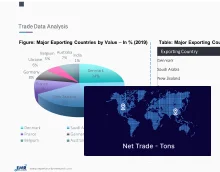
Get insights & trends for a competitive edge.
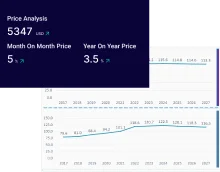
Track prices with detailed trend reports.
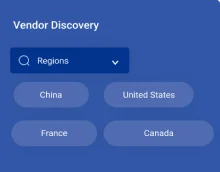
Analyse trade data for supply chain insights.
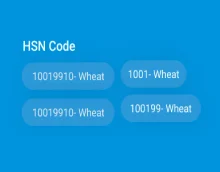
Leverage cost reports for smart savings
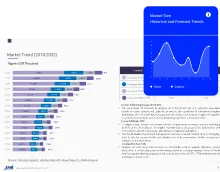
Enhance supply chain with partnerships.
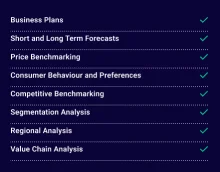
Connect For More Information
Our expert team of analysts will offer full support and resolve any queries regarding the report, before and after the purchase.
Our expert team of analysts will offer full support and resolve any queries regarding the report, before and after the purchase.
We employ meticulous research methods, blending advanced analytics and expert insights to deliver accurate, actionable industry intelligence, staying ahead of competitors.
Our skilled analysts offer unparalleled competitive advantage with detailed insights on current and emerging markets, ensuring your strategic edge.
We offer an in-depth yet simplified presentation of industry insights and analysis to meet your specific requirements effectively.
Share